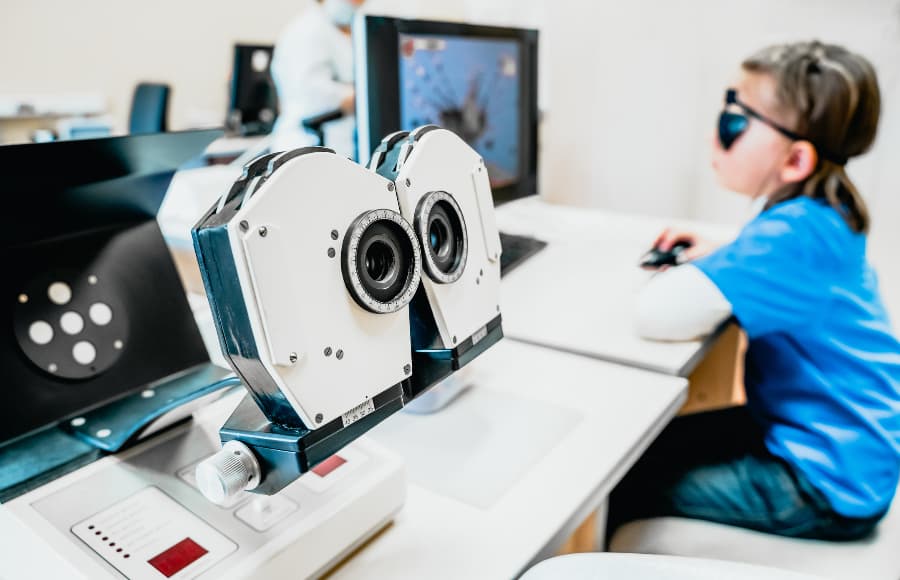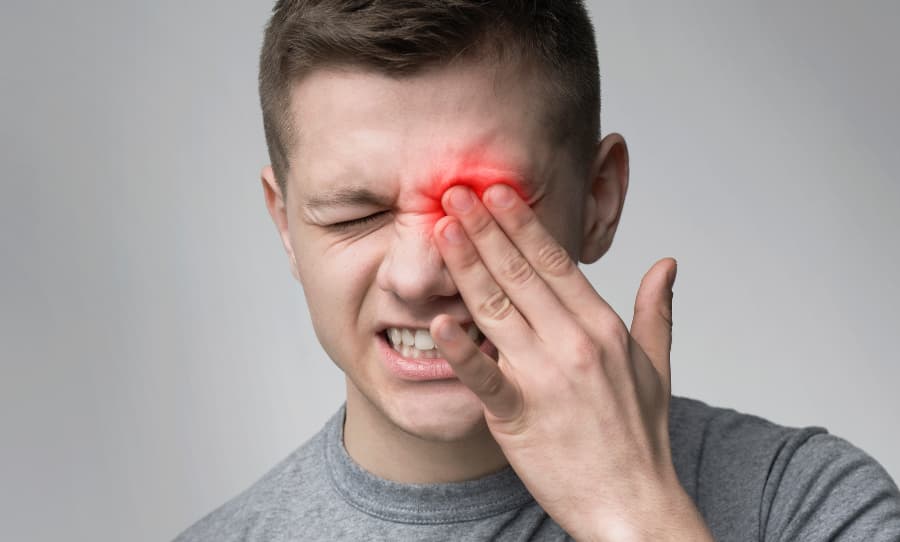Who Should Be Evaluated for Vision Therapy?
Kids and adults can struggle with eye control, focus, and vision, leading to lower self-esteem and difficulties performing everyday tasks. If you need to improve your visual performance, you may benefit from vision therapy.
The professionals at Savedoff, Ciccone & Davis, Doctors of Optometry, P.C. specialize in vision therapy services. We help patients in the Manlius and Syracuse, New York, areas benefit from this branch of optometry. Here, we discuss what vision therapy is and who should consider an evaluation for this service.
What Is Vision Therapy?
Vision therapy is a specialized optometry service that is designed to improve the quality and efficiency of your vision and enhance your visual skills. It is a personalized, non-invasive program that helps strengthen the communication between your vision system and your brain. This process involves eye, neurosensory, and neuromuscular exercises under the supervision of an optometrist. Vision therapy has the following goals:
- To change visual processing to understand information
- To enhance visual comfort
- To improve visual abilities and skills
Doctors use lenses, prisms, filters, occluders, computer programs, and specialized instruments to achieve desired results.
Who Should Be Evaluated?
Both adults and children should be evaluated for vision therapy, especially if they have trouble reading or focusing, headaches and eyestrain, changing vision, or certain eye conditions. Some common signs that you or your child may benefit from vision therapy include the following:
- Learning difficulties: If your child is struggling in school or having difficulty reading or concentrating, vision therapy may help bridge the gap. Vision therapy may also be helpful for those with poor hand-eye coordination or visual memory skills.
- Problems focusing: If you’re having a tough time focusing on a single line of text, tracking moving objects, or shifting your eyes from one object to another, you should be evaluated for vision therapy.
- Covering for one eye: Do you or your child cover or close one eye while reading? If you find it easier to read using only one eye, you may have binocular vision dysfunction, which can improve with therapy.
- Eye strain and headaches: If you get frequent migraines or your eyes are tired by the end of the day, you may have trouble processing visual input. Vision therapy can help reduce the amount of effort your brain has to put into understanding the world around you.
- Motion sickness: When your brain and visual system aren’t cooperating, you may notice increased dizziness or motion sickness.
- Double or blurred vision: Seeing double or having blurry vision when reading or focusing on nearby objects can lead to eye strain or discomfort. These may be caused by poor eye coordination or a problem with your depth perception. Both can be addressed through targeted exercises.
What Conditions Does Vision Therapy Help?
In addition to the symptoms outlined above, vision therapy is also a recommended treatment for several eye conditions and ocular diseases. It is often used alongside optical solutions, such as glasses or contact lenses. If you have any of the following diagnoses, you should be evaluated for vision therapy.
Strabismus
Also known as crossed eyes, strabismus causes the eyes to look in two different directions simultaneously. It can make it difficult for a person to focus both of their eyes in the same direction, especially when stressed or tired.
Visual Perception Dysfunction
Visual processing is the ability to interpret and analyze visual input. If your brain struggles to process visual input quickly and effectively, you may have visual perception dysfunction. You may also experience problems reading, writing, driving, or performing other visual tasks.
Amblyopia (Lazy Eye)
When the nerve pathways between the eye and the brain are not properly stimulated, your brain starts to favor one eye over the other, resulting in a lazy eye. Amblyopia creates poor vision over time and is the leading source of decreased vision in children.
Oculomotor Dysfunction
When the muscles that control eye movement don’t work together, you may find it challenging to follow a moving object. Oculomotor dysfunction can make it difficult to shift your focus between objects, play sports, or perform tasks that require fine motor skills and hand-eye coordination.
Convergence Insufficiency
Convergence Insufficiency makes it difficult to focus on nearby objects. It decreases the eyes’ ability to turn inward, leading to blurred or double vision when looking at small objects or items that are up close.
Improve Your Visual Health with Vision Therapy in Manlius and Syracuse
Vision therapy benefits people of all ages. At Savedoff, Ciccone & Davis, Doctors of Optometry, P.C., we offer comprehensive vision services to residents in Manlius and Syracuse, New York. Our vision therapy services benefit individuals of all ages, from children to seniors. Children can overcome learning-related vision problems, improve their academic performance, and enhance their overall quality of life. Athletes can strengthen their hand-eye coordination, resulting in better outcomes on the field with our sports vision therapy.
Likewise, adults can reduce their eye strain and alleviate other symptoms with our computer vision therapy. For seniors, our personalized vision therapy helps treat age-related vision changes. You can enjoy an increased quality of life, a reduced risk of falls, and improved visual acuity. We also offer post-concussion vision therapy for those who are dealing with visual challenges due to a head injury.
If you’re experiencing any of the above symptoms or eye conditions, turn to the team at Savedoff, Ciccone & Davis, Doctors of Optometry, P.C. We use state-of-the-art equipment and innovative techniques to provide our patients with high-quality care. Contact us today to be evaluated for vision therapy or to learn more about how to improve your overall visual health.



